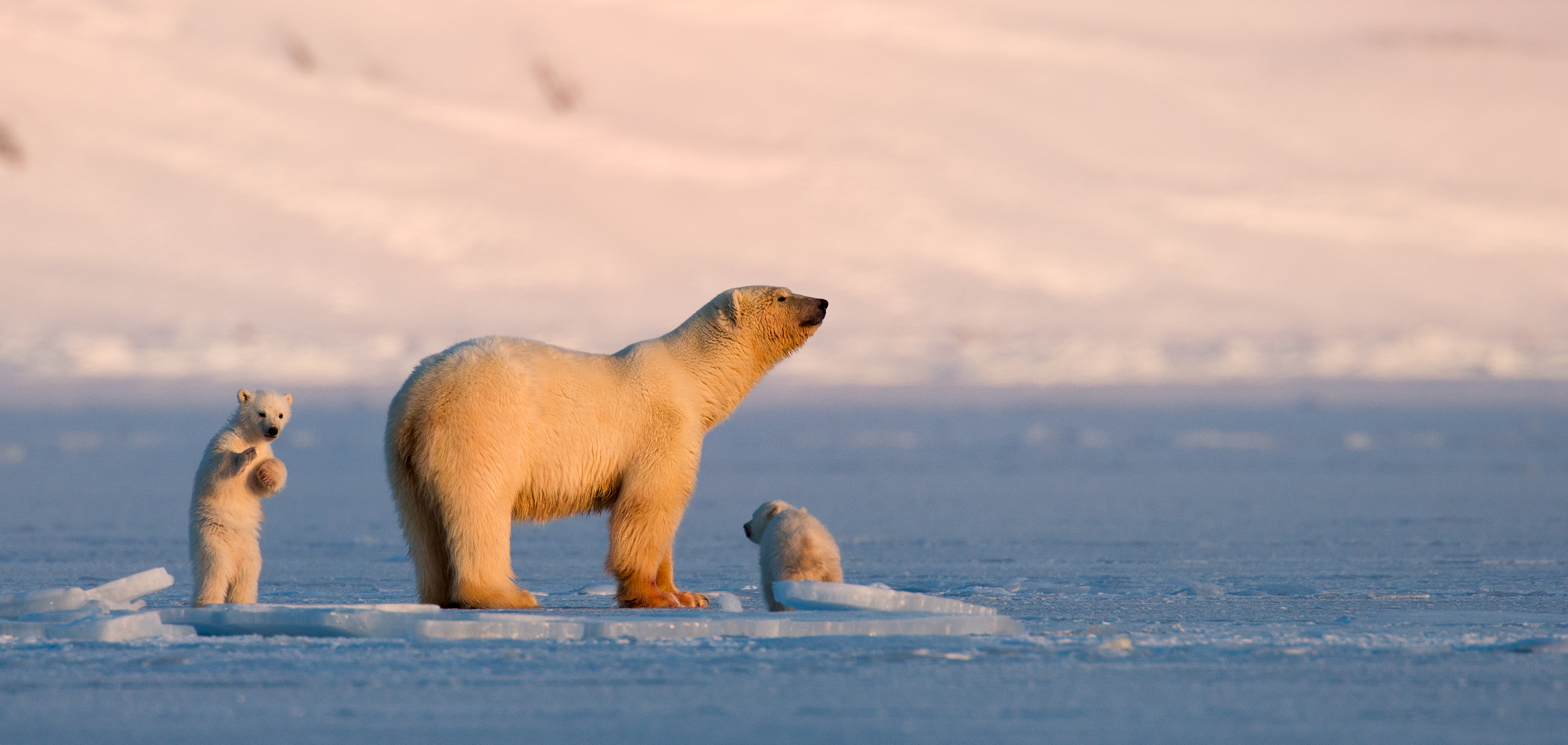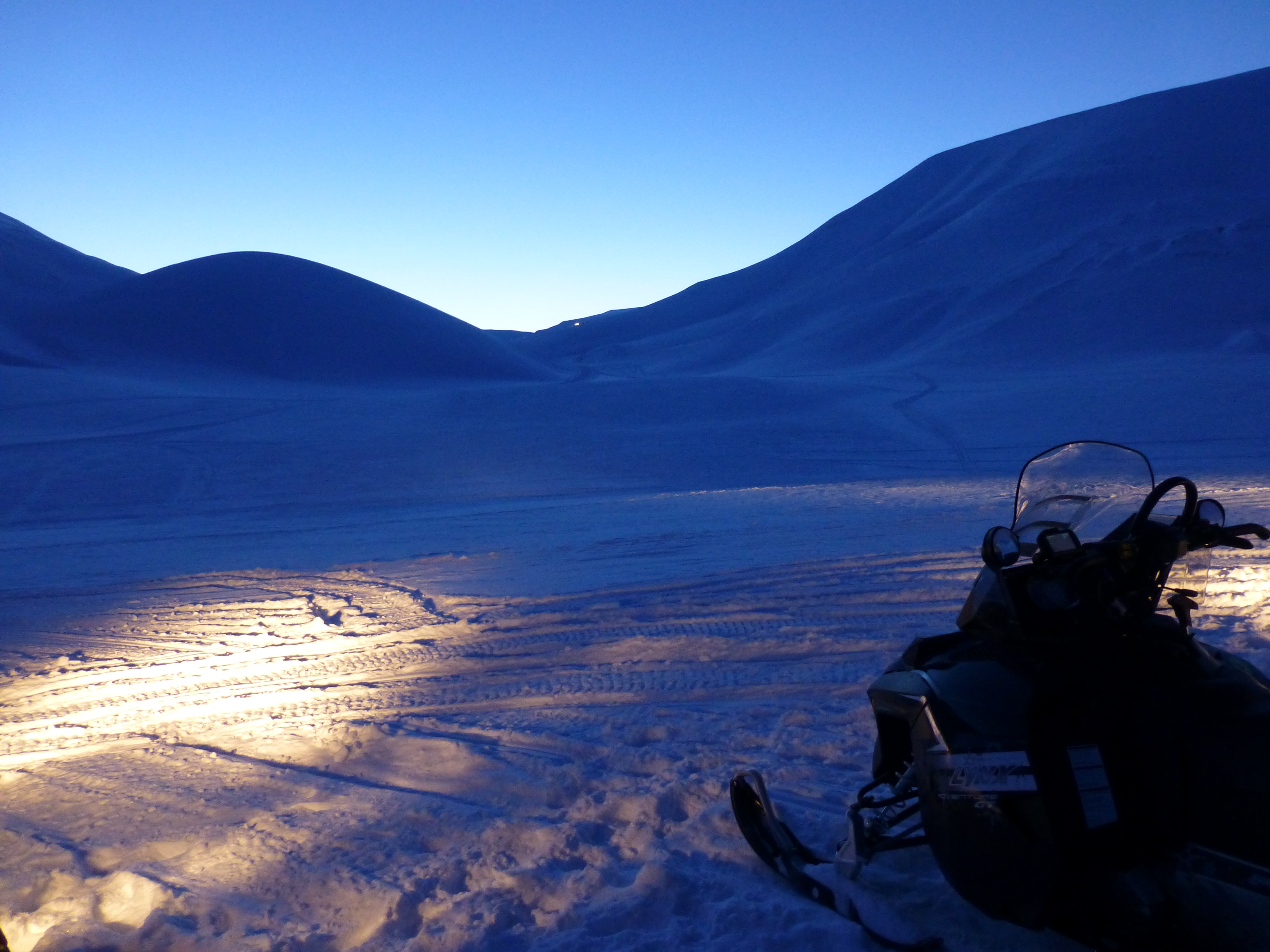Svalbard appeals to adventurous travellers who wish to experience and admire this pristine Arctic landscape and to observe the mammals which call the archipelago their home. This is arguably the best place in the world to see polar bears.
The focus point for visitors is Longyearbyen, a community of 2000 inhabitants situated on the shores of the Isfjord. It is the northernmost year-round settlement in the world and those who live in town are from drawn to the Arctic from far and wide – Norway, Australia, Argentina, Thailand, Portugal and Switzerland – each answering their own ‘polar’ call.
The untamed wild is all around Longyearbyen and the magnificence and scale of the scene is guaranteed to capture the heart of all explorers.
During the dark winter months (Nov-Feb) the moon and twinkling stars illuminate the snow-covered vista below. At this time of year, the Aurora Borealis can be observed throughout if conditions permit. By February the solar rays are desperate to return and a golden glow burns on the horizon. The ever-changing light show performed is truly magical – look upwards and see a blue sky tinted with pinks and dotted with the constellations.
Winter activities are available from January to June, including at the time of the midnight sun (20Apr-22Aug). Where-else can visitors combine dog-sledding on snow-covered mountains, with ice caving, rib boat safaris, fossil hunting and hiking on one holiday? We believe that this juxtaposition of activities is unique to Svalbard (Jun).
As the snow melts around Longyearbyen, the incredible geological makeup of the archipelago can be observed and the mountain peaks, glacial valleys and open tundra accessible with a local guide. Join a boat excursion on the Isfjord to witness the drifting sea ice, glacial cliffs and to explore the tidal shores rich in fossils. It is also possible to visit the abandoned mining settlement of Pyramiden and the Russian settlement of Barentsberg.
For many, the highlight of any summer vacation to Svalbard is a longer cruise around the archipelago. With seven national parks, six nature reserves, 15 bird sanctuaries, one geotopic protected area and only 46km of road, these expeditions permit visitors to observe ice-capped and coastal regions only inhabited by wildlife – polar bears, walruses, seals, whales (beluga, minke, orca), Svalbard reindeer, Arctic foxes and a wealth of migratory bird species – northern fulmar, puffins, kiliwakes and Arctic skua.
Whether visiting for a short-break or combining Longyearbyen with a longer Arctic exploration, this is a destination which will capture imaginations and hearts. We feel truly blessed to have visited Svalbard and we cannot wait to share our passion and knowledge with future guests.








